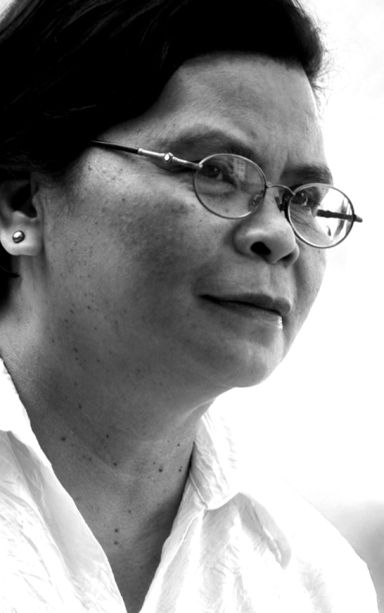
DELA CERNA
People go on pilgrimage to the holy places and miracle sites of their religion. To go on an inter-faith pilgrimage is a rarity and this was what Prof.
Henry Francis Espiritu, philosophy teacher of UP Cebu did. Prof. Espiritu is the most inter-faith person on earth. Driven by the desire to know how the indigenous peoples live with the presence of many religions in their communities, he went to the Cordilleras last June 4 to 15. He wanted to know what the different religions have done to enhance the lives of the indigenous peoples without changing their way of life. He shared his pilgrimage for this column.
He recalled the sad experience of the indigenous peoples in Bukidnon where they were invited by Protestant and Muslim groups to join them and in the process, their traditions and cultural practices were discontinued and were considered pagan—their tangible and intangible heritage gone. This was the reason why he decided to go to the Cordilleras where he not only visited Hindu, Buddhist, Muslim temples and Christian churches but also observed their respective rituals integrating with the local ones.
According to Prof. Espiritu, the American Anglican enculturated the local traditions citing Brent dressing like an Igorot. There was accommodation of the indigenous traditions to Christianity.
For example, in Sagada at St. Mary’s Church, Saunton, the founder wore the bahag and lived like an Igorot, and studied the culture. The baptism performed was Christian, but they did not discourage traditional rituals. The Eucharist is not a discontinuity. The church is in nature. They connect rites of the church with the local rituals for there is no disconnection between the social life and the spiritual. They hold consultations and consensus building in the village meeting hall called Dap-ay for theirs is a communal way of planning and going about their daily life.
Among the places visited were Baguio, Benguet, Sagada, La Trinidad, Kiangan, Ifugao, Bontoc. There was a diversity of the Cordillera cultures, but one thing in common is their being a Cordillera (Highland).
At the Baguio Islamic Center, the chanting of the Qur’an ranges from the Arabized to the adoption of the Hudhud and Lam-ang (Igorot and Ilokano epics). The Qur’an has become a part of folk tradition.
At the Hindu Temple in Baguio, Hindus and Sikhs have shared temple. In the worship of Krishna, there is a combination of Indian dance and the Igorot, Ifugao, and Bontoc dances. In terms of attire, there is a fusion of the South India sari and the local woven cloth.
In my elementary and high school years in St. Catherine’s School in Carcar, an ICM-run school, we learned about the Mountain Province (the Cordilleras) when the ICM nuns used to talk about their experiences in the Mountain Province. How they enjoyed their assignment in the Mountain Province – in Lubuagan, Lagawe, Tabuk, Kiangan, Bontoc, Baguio. The ICM nuns had their first missions in the Mountain Province in the early part of the 20th century before moving down to the lowlands and the rural and urban areas. I also remember that a portion of the Mission Sunday collections every October was given to the ICM Missions in the Mountain Province.
The lure of the Mountain Province did not escape my elder sister Mila who volunteered to teach in the ICM school in Lubuagan right after graduation in 1962, and she enjoyed it very much. After the summer stint in Lubuagan, she came home with a souvenir from the indigenous peoples in Lubuagan in the form of the bones of their sacred snake contained in a beautiful clay jar which was supposed to protect her from harm.
Prof. Espiritu’s observations make me reflect on the colonial histories of the Third World which show how religion was used to obliterate the cultures of the people. They help us understand the fierce stance and the aggressive assertion of the natives to foreign missionaries. The churches, especially in Asia and Africa, should be extremely mindful of local traditions and culture in going about their missions.
For Prof. Espiritu, there are two ways to do missions: accommodation and acculturation. The challenge thrown to missionaries is to immerse into the
culture of the constituents, for it is very sad if religion is used to obliterate people’s culture. The experiential approach to religiosity for missionaries is that it is not about changing people but providing a bridge and a witness of divine truth as a community. Take it from Pope Francis who declared that “ the new way to do missions is to provide a bridge of culture among peoples.”
I fully understood Prof. Espiritu’s sharing and dream using the prism of what Sr. Ma. Delia Coronel, ICM, did with the Maranao culture. She approached the proud Maranao people and culture with reverence in the 1970s when there was chaos. Her accommodation and enculturation led her to help preserve their cultural heritage. As head of the Folklore Division of the University Research Center of MSU, she led a team of Maranaos to research, document, interview, transcribe, translate into English the great Maranao Epic, Darangen, which was published in eight volumes.
Prof. Espiritu’s inter-faith pilgrimage is an eye opener for those groups doing missions in communities where there are indigenous peoples.
Recognizing and respecting other people’s cultures is a road to peace building.
Disclaimer: The comments uploaded on this site do not necessarily represent or reflect the views of management and owner of Cebudailynews. We reserve the right to exclude comments that we deem to be inconsistent with our editorial standards.
